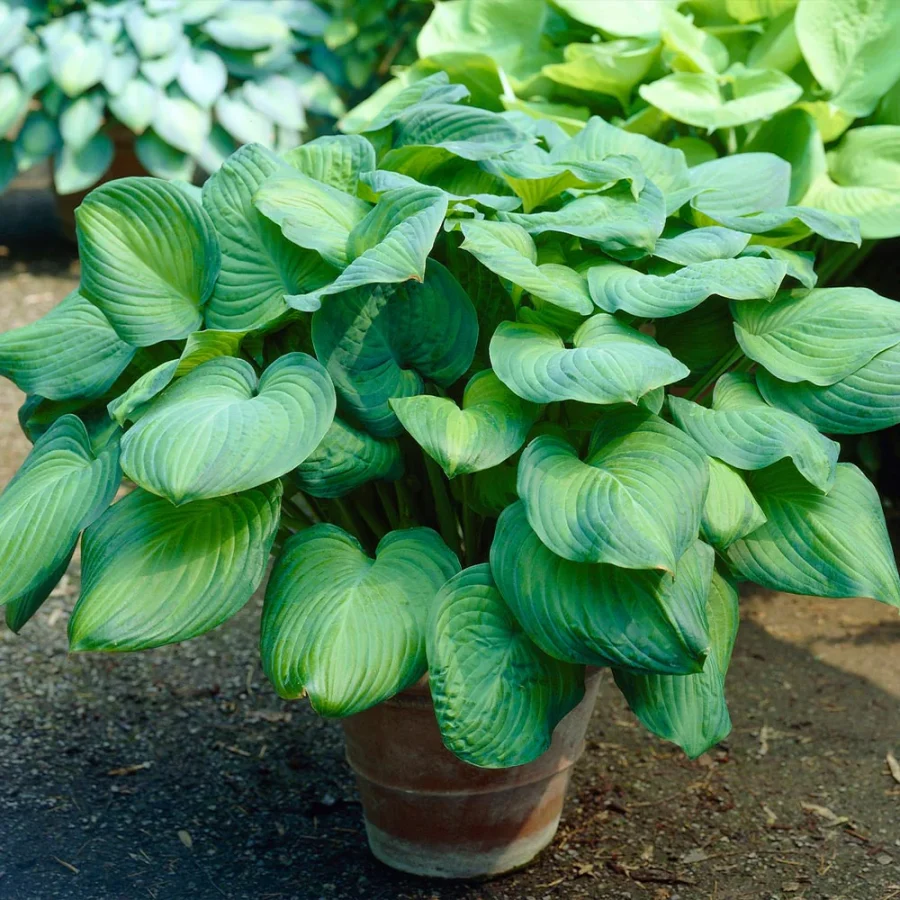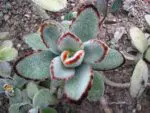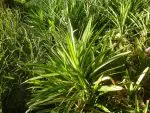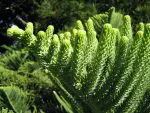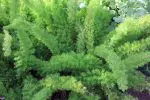This post contains affiliate links. If you buy something from one of our links we may earn a commission. Thanks
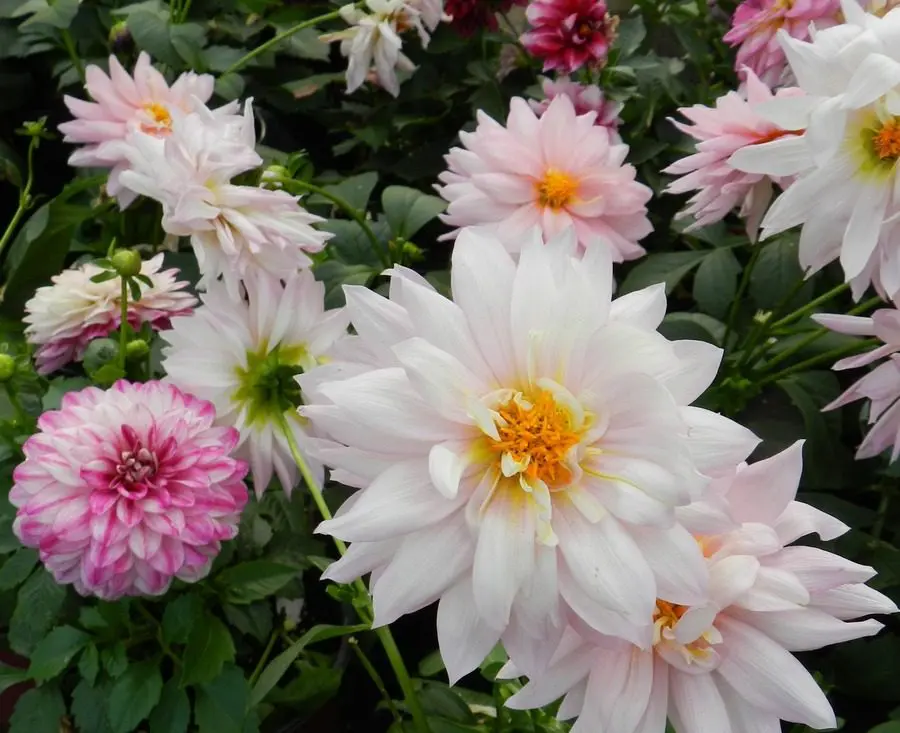
Discover the secrets and benefits of planting Dahlia seeds including how to care for Dahlia seedlings and when to plant for beautiful Dahlias grown from seed!
To grow Dahlias from seed, start by sowing them indoors 6-8 weeks before the last expected frost. Use a seed tray with well-draining soil and keep it moist but not waterlogged. Once seedlings have at least two leaf sets, transplant them into individual pots. Move outdoors after the danger of frost has passed.
Planting Dahlia Seeds is a wonderful way to add vibrant color and stunning beauty to your flower garden.
It’s not only easy and affordable, but it also allows you to experiment with a variety of Dahlia varieties and create unique, one-of-a-kind blooms.
Whether you’re an experienced gardener or a novice, planting Dahlias from seed is a fun and rewarding experience that anyone can enjoy.
So, let’s dive in and discover the secrets and benefits of planting Dahlia seeds!
Introduction To Planting Dahlia Seeds
Are you ready to add some vibrant colors to your flower garden this year?
Planting Dahlia flower Seeds is an easy and affordable way to grow these stunning flowers for home gardeners.
They also make long-lasting cut flowers to display indoors.
In this post, we’ll cover everything you need to know about growing Dahlias from seed, including when and how to sow them, tips for caring for your seedlings and transplanting them into your garden beds.
We’ll also answer some common questions about Dahlias, such as whether they bloom the first year and how long they will come back.
So, let’s get started and discover the secrets to growing beautiful Dahlias from seed!
Introduction to Dahlias
Dahlias are stunning flowers that come in various colors and sizes, making them a popular choice in many flower gardens.
They bloom throughout the summer and fall, providing a continuous display of colorful flowers.
If you’re interested in growing Dahlias in your garden, it’s a good idea to consider starting from seed.
Benefits of Growing Dahlias from Seed
Growing Dahlias from seed is a fun and rewarding experience that offers several benefits.
For one, it’s more affordable than buying established plants or tubers. Additionally, growing from seed allows you to experiment with new varieties and colors that may not be readily available in stores.
Starting from seed also gives you the opportunity to control the growing conditions, ensuring that your plants get the right amount of light, water, and nutrients.
Save Some Money Growing Dahlias From Seeds
Buying Dahlia tubers can get expensive especially if you want to fill in a large garden bed.
But if you are willing to put some time into growing them from seed you can save quite a bit.
You can find everything from dwarf Dahlias, Pom Pom Dahlias, and Dinner Plate Dahlias available as seeds.
The great thing is you will get blooms the first year if you start them at the right time indoors.
Plus you will get a greater variety of blooms and tubers or seeds for the next season.
Germinating Dahlia Seeds
Germinating Dahlia seeds is an exciting and rewarding process that takes a bit of patience and attention to detail.
In this section, we’ll cover everything you need to know to successfully germinate Dahlia seeds, from selecting the right lighting and temperature to caring for your seedlings as they grow.
Whether you’re a seasoned gardener or a beginner, with a little care and attention, you’ll be able to enjoy beautiful Dahlias in your garden all season long.
Let’s get started!
Overview of Planting Dahlia Seeds
To start planting Dahlia seeds, you’ll need a few essential tools, including a seed tray or small pots, multi-purpose compost, Dahlia seeds, clear polythene bags, and a label and pencil.
Fill the tray or pot with moist compost, and gently push your Dahlia seeds into the soil surface.
Cover with an inflated clear polythene bag and wait for seedlings to germinate, usually within a couple of weeks.
Once the ‘true’ leaves have grown, transplant the seedlings into individual pots, and water well.
Harden off plants by standing them outdoors during the day and bringing them in at night.
Finally, plant them in their final positions in your garden once the risk of frost has passed.
By following these simple steps, you’ll be able to grow beautiful Dahlias from seed and enjoy their stunning blooms in your garden all summer long.
Choosing the right potting soil mix (coco coir)
Are you ready to get your hands dirty and start planting Dahlia seeds? One of the most important steps in the process is selecting the right type of soil.
While there are many options available, we recommend using coco coir.
This versatile growing medium is made from the fibrous husk of coconuts and provides excellent drainage, aeration, and water retention.
In this section, we will cover everything you need to know about soil and planting, including the benefits of using coco coir for starting seeds.
Choosing the right potting soil mix (coco coir):
When it comes to starting seeds, having the right potting soil mix can make all the difference.
Coco coir is an excellent choice because it’s a sustainable and renewable resource that’s free of harmful pathogens and seeds.
It also provides excellent water retention, making it easier to maintain the moisture level of the soil.
Spread the potting soil in a flat tray and plant the Dahlia seeds:
After choosing the right potting soil mix, it’s time to spread it in a flat tray and plant the Dahlia seeds.
Gently press the seeds into the soil and then lightly cover them with a thin layer of potting soil.
Lightly watering and keeping the soil damp during sprouting:
Once the seeds are planted, it’s important to keep the soil consistently moist, but not too wet.
Lightly water the soil with a misting spray bottle or a watering can with a gentle showerhead to avoid overwatering.
Ideal temperature and lighting conditions for germination:
The ideal temperature for germinating Dahlia seeds is between 65 and 70 degrees Fahrenheit.
Place the tray in a warm location with indirect sunlight or under grow lights for at least 12 hours a day.
Tips for not over-watering the seeds:
It’s important not to overwater the seeds during the germination process, as this can cause them to rot.
Make sure to monitor the soil’s moisture level regularly and only water when the top of the soil feels dry to the touch.
The usual success rate for Dahlia seeds:
It’s worth noting that Dahlia seeds have a lower success rate than other plants, but this shouldn’t discourage you from trying.
On average, only about 30-40% of Dahlia seeds will germinate.
But with proper care and patience, you can increase your chances of success.
Lighting for Starting Seedlings
One important aspect to consider when starting Dahlia seedlings is lighting.
While natural light is ideal, it may not always be sufficient, especially in areas with limited sunlight or during the winter months.
In these cases, supplementing with artificial light can help ensure healthy growth.
Choosing the Right Type of Artificial Light
When it comes to artificial light, there are several options to consider.
The most popular types are fluorescent and LED lights. Fluorescent lights are relatively inexpensive and provide a good spectrum of light for seedlings.
LED lights, on the other hand, are more energy-efficient and can provide a full spectrum of light needed for different stages of growth.
Placement and Duration of Artificial Light
Regardless of the type of light chosen, it’s important to place the lights in the right location and ensure they’re on for the appropriate duration.
Seedlings need light for 12-16 hours per day, so make sure to set a timer if using artificial light.
Position the lights above the seedlings, and adjust the height as the plants grow taller. Follow the manufacturer’s directions for this.
Natural Light Considerations
If relying on natural light, make sure to place the seedlings in a south-facing window or under a grow light.
Rotate the pots regularly to ensure all sides of the seedlings receive equal amounts of light.
Be aware of any drafts or temperature changes that may affect the plants, and adjust their location accordingly.
Potting With Coco Coir And Perlite
Potting Dahlia seedlings is an exciting and rewarding task, especially when using coco coir and perlite.
These two ingredients make a great potting mix for young plants, providing the perfect balance of moisture retention and drainage.
In this section, we will go through the steps of potting your Dahlia seedlings in this mix, ensuring that your young plants get the best start possible.
So, let’s dive in!
Transplanting the Seedlings
After your Dahlia seedlings have grown to a height of 3 inches, it’s time to transplant them into small pots.
Use the same potting soil mix of coco coir and perlite that you used to start the seeds.
Gently remove each seedling from the flat tray, being careful not to damage the delicate roots.
Watering and Taking Root
Water the seedlings enough to keep the soil damp while they take root in their new pots.
Keep the soil damp as the plants continue to grow, but be sure not to overwater them.
Waiting for Transplanting Outside
It’s important to wait until the plants have grown and developed before transplanting them outside.
This usually takes about 4-5 weeks after transplanting into pots.
Be sure to keep the soil damp and the plants in a warm and sunny location to ensure healthy growth.
Transplanting Outdoors
It’s finally time to transplant your young Dahlia plants outdoors and watch them flourish in the warm sun!
This step is exciting, but it’s important to know the right way to do it to ensure your plants have the best chance of survival.
In this section, we’ll cover the ideal time to transplant, how to properly prepare your garden bed, and how to successfully transplant your young Dahlia plants.
So, grab your gardening gloves, and let’s get started!
Hardening off the seedlings before transplanting
Before planting the young Dahlia plants outside, they need to be acclimated to outdoor conditions to avoid shock.
Gradually expose them to the outdoors over a period of a week or two.
Begin by placing the seedlings in a shaded and sheltered area for a few hours per day and then gradually increase the amount of time they spend outside.
Choosing a sunny location with well-drained soil
Dahlias need full sun to thrive, so choose a location that gets at least 6 hours of direct sunlight per day.
Additionally, the soil should be well-drained to prevent waterlogging, which can cause root rot.
If the soil is heavy, mix in compost or other organic matter to improve drainage.
Watering until the roots are established
After planting the Dahlias, water them well to help the roots become established.
Keep the soil moist but not waterlogged during this time. Once the plants are established, they will be able to tolerate drier conditions.
Fertilizing with a low-nitrogen fertilizer
Dahlias benefit from fertilization, especially when they are planted in soil that is not very fertile.
Use a low-nitrogen fertilizer, as high levels of nitrogen can cause excessive foliage growth at the expense of flowers.
Frequency and timing of fertilization
Fertilize the Dahlias once a month throughout the growing season, starting in mid to late May. Stop fertilizing after the first fall frost.
Caution against over-fertilization
Over-fertilizing can cause excessive foliage growth and can also lead to weakened stems and increased susceptibility to disease.
Be careful not to apply too much fertilizer, and always follow the instructions on the label.
Germinating Dahlia Seeds Timing And Variety
Planting time for Dahlia seeds:
It’s important to know the right time to sow your Dahlia seeds. You want to start planting them indoors during late winter or early spring.
By doing this, you can expect to have young plants that are ready to be planted outdoors in late May, just in time to enjoy their beautiful blooms during the summer and early fall.
Choosing the right Dahlia varieties:
There are a wide variety of Dahlia seeds available on the market. It’s important to choose the right Dahlia variety that suits your gardening needs.
If you are new to gardening, start with a mix of quick-growing bedding Dahlias, which are easy to grow from seed.
You can also choose to sow seeds saved from your favorite Dahlias at the end of the previous season to keep their unique features alive.
Saving Dahlia Seeds
Are you interested in growing your favorite Dahlia varieties again next year?
One way to do this is by saving the seed heads from your mature plants at the end of the growing season.
This can be a great way to ensure that your garden beds are full of your favorite flowers every year.
In this section, we will cover the basics of how to save Dahlia seeds, including when to collect them and how to store them for next year’s planting.
Allowing a few flowers to set seed for collection
At the end of the season, you can allow some Dahlia flowers to mature and form seed pods.
Let the pods dry out completely before harvesting. The best time to do this is when the pods have turned brown and have started to open up.
Harvest the pods and store them in a cool, dry place until you’re ready to sow them the following year.
Saving the seeds for the following year
Once you have harvested the Dahlia seeds, store them in an envelope or airtight container.
Label them with the name of the variety and the date of harvest. Keep the seeds in a cool, dry place until you’re ready to sow them in the following season.
A mixture of different flower shapes and colors from resulting plants
Growing Dahlias from saved seed is a great way to discover new flower shapes and colors.
When you save seed from a particular Dahlia plant, you’ll get a mixture of different flower shapes and colors from the resulting plants.
This can be a fun and exciting way to experiment with new varieties in your garden.
Growing Dahlias in Pots Outdoors
If you don’t have the space or soil for planting Dahlias in your garden beds, growing them in pots is a great alternative.
Here are some tips for growing Dahlias in pots outdoors:
Choosing the right pot and soil
Pick a pot that’s at least 12 inches in diameter with good drainage holes, and fill it with a high-quality potting soil that’s rich in organic matter and well-draining.
Planting and watering
Plant the tubers with the eyes facing up, about 4-6 inches deep, and water them thoroughly. Keep the soil moist, but not waterlogged, and make sure the pot is in a spot with at least 6 hours of direct sunlight.
Fertilizing and deadheading
Fertilize the plants with a balanced fertilizer every 4-6 weeks, and deadhead regularly to encourage continuous blooming.
Supporting the plants
Dahlias can grow quite tall and may need support, especially if they’re in a windy area. You can use stakes or trellises to keep the plants upright.
Overwintering and storage
In colder climates, Dahlias will need to be dug up and stored indoors during the winter.
Allow the foliage to die back naturally before digging up the tubers, and store them in a cool, dry place until the following spring.
Frequently Asked Questions
If you’re new to growing Dahlias, you may have some questions about the process.
Here, we’ve compiled a list of frequently asked questions to help you out.
Whether you’re wondering about the best time to plant Dahlia seeds or how to care for your mature plants, we’ve got you covered.
So read on and get ready to become a Dahlia-growing expert!
Q: How long does it take to grow Dahlias from seeds?
A: It typically takes 4-5 weeks for Dahlia seeds to germinate and reach a height of 3 inches, and another 4-5 weeks before they are ready to be transplanted outdoors.
Q: Can you plant Dahlia seeds straight in the ground?
A: Yes, you can plant Dahlia seeds straight in the ground, but it’s important to wait until after all danger of frost has passed and ensure that the soil is well-drained and fertile.
Q: Will Dahlias grown from seed come back next year?
A: Yes, Dahlias grown from seed will come back next year as long as they are properly cared for and protected from cold temperatures and frost.
Q: What is the difference between growing Dahlias from seed and tubers?
A: The main difference between growing Dahlias from seed and tubers is that seed-grown plants may produce a wider variety of colors and shapes, while tubers provide a more reliable way to grow mature plants that are true to the parent plant.
Q: Can you leave Dahlias in the ground over winter?
A: In areas with milder winters, you may be able to leave Dahlias in the ground over winter, but it’s important to protect them from freezing temperatures and excess moisture.
In colder climates, it’s best to dig up the tubers and store them indoors until the following spring.
Q: How many flowers do you get from one Dahlia tuber?
A: The number of flowers you get from one Dahlia tuber will vary depending on the variety and growing conditions, but it’s common to get multiple blooms from a single plant.
Q: Does picking Dahlias encourage more flowers?
A: Yes, picking Dahlias encourages more flowers to bloom, as it prevents the plant from putting energy into producing seeds and instead focuses on producing new growth and blooms.
Planting Dahlia Seeds Final Thoughts
Congratulations, you now have a better understanding of how to grow Dahlias from seed and enjoy the beauty of these wonderful plants in your garden.
While it may seem daunting to start from scratch, growing Dahlias from seed is a rewarding experience that allows you to create your own unique Dahlia varieties.
With the right soil, potting mix, and care, you can enjoy beautiful Dahlias in your garden year after year. Happy planting!
Recap of key points in planting Dahlia seeds:
Throughout this post, we have covered everything you need to know about planting Dahlia seeds.
We’ve discussed choosing the right soil, ideal germination temperature and lighting conditions, transplanting the seedlings, and when and how to plant them outside.
Try growing Dahlias from seed:
Growing Dahlias from seed may seem intimidating, but it’s actually quite simple, and it can be an exciting and rewarding process.
Plus, you can try out new Dahlia varieties that might not be available as tubers.
Affirmation of the beauty of Dahlias in flower gardens:
Dahlias are a true showstopper in any flower garden.
With their bright and bold colors and unique flower shapes, they add a touch of elegance and charm to any outdoor space.
So, don’t hesitate to add these gorgeous blooms to your garden and enjoy their beauty year after year.
Read more about how to grow Dahlias in pots






















